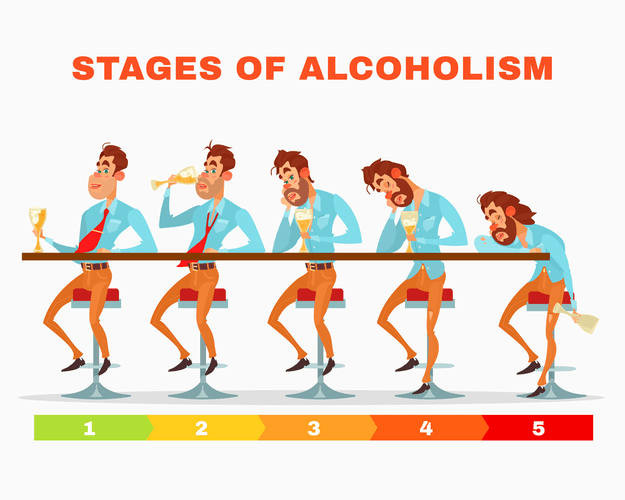Bananas are rich in vitamin B6, which the body needs to produce and use serotonin. This neurotransmitter is key to reducing depression and anxiety—common reasons people use alcohol and also common issues that arise when quitting alcohol (4). It’s important to note that you may or may not be aware of these external triggers as reasons for your alcohol cravings. As your cravings for alcohol become more manageable, you may decide to try reintroducing situations that previously triggered your temptation to drink. Therapy, medication, and recovery programs can all have benefit for reducing and preventing cravings.
- Prescription medications can be a useful tool in treating alcohol cravings.
- “As a starting place,” Mariani says, “moderation is often a goal that everyone can agree on.”
- Find activities that are mentally and emotionally nourishing and bring you joy, and identify ways to connect socially with friends, says Witkiewitz.
With practice, the urge can become a signal to use an urge coping strategy. It goes without saying that it’s important to pay attention to drink equivalents. A typical shot equals one 5-ounce glass of wine, which equals one 12-ounce standard beer. If your favorite bartender is pouring your drinks and he knows you are a big tipper who likes to drink, you might need to have a brief conversation with him. Believe me, bartenders are used to these conversations, and they will not hold it against you.
- As a practicing physician, Josh helps manage the NYC Health + Hospitals/Bellevue addiction medicine clinic in adult primary care.
- We do not offer individual medical advice, diagnosis or treatment plans.
- Feeling at your best physically can boost resilience and emotional strength, equipping you to weather challenges that trigger the desire to drink.
myths about using Suboxone to treat opioid addiction
It can mean more time for your other interests, and even new interests. More time to meet new people, catch up with old friends and try new things. You don’t have to leave the house to get support from other people who understand and respect what you’re trying to do. In fact, you can find it online with sites like Sunnyside, which helps you create a customized plan, Tempest, Moderation.org or Ben’s Friends for people who work in the food and beverage industry. Instead of aiming for complete abstinence, for instance, aim to drink fewer than seven days a week.
Alcohol Use and Your Health
For some drinkers, controlled drinking or moderate drinking is an option, and for a small portion of the population, about 5%, controlled drinking is nearly impossible. While many people believe “once an alcoholic, always an alcoholic,” many people diagnosed with alcoholism can learn to control their drinking and become social drinkers again. That said, if you have been diagnosed with alcohol dependence, most addiction psychologists, psychiatrists, physicians, social workers, and addiction counselors would strongly recommend abstinence. This is always a very personal decision that should be made with careful consideration of the risks and benefits of drinking versus abstinence.

Helpful Links
However, even a mild disorder can escalate and lead to serious problems, so early treatment is important. Consider tracking and analyzing your urges to drink for a couple of weeks. This will help you become more aware of when and how you experience urges, what triggers them, and ways to avoid or control them.
Even 10 minutes catching up on recent news and sharing stories from your daily life can offer enough of a distraction that the craving passes, almost before you know it. But even when you don’t know anyone else trying to make a similar change, friends and loved ones can still offer emotional support. A positive distraction can help occupy your thoughts and energy, giving you something to focus on besides the urge to drink.
Recommendations for health care settings

But medical research has shown that the cold-turkey approach may not be the best way for everyone. Some of these tips may be more helpful early in your efforts to change your drinking habits, whether your goal is to cut back or to stop drinking entirely. These tips can be helpful for those making changes in their drinking on their own and not in an alcohol use disorder treatment program. Talk to your family doctor or an addiction counselor about whether a moderation or abstinence-based approach is right for you.

In some people, the initial reaction may feel like an increase in energy. But as you continue to drink, you become drowsy and have less control over your actions. Alcohol use disorder can include periods of being drunk (alcohol intoxication) and symptoms of withdrawal. You can’t always change the situation that’s creating these feelings.
“A typical craving might last for 3 to 5 minutes,” notes Christina Hanks, senior recovery coach and care team manager at Tempest. “Alcohol cravings can be very intense, especially in early recovery,” explains Ruby Mehta, licensed clinical social worker and director of clinical operations for digital recovery platform Tempest. The proven strategies on this page are recommended to reduce excessive alcohol use why can’t i control my drinking and alcohol-related harms. Small changes can make a big difference in reducing your chances of having alcohol-related problems. Consider how giving into an urge keeps it alive while not giving in to the urge slowly kills it. While you can’t make the urge go away, you can see it for what it is.

